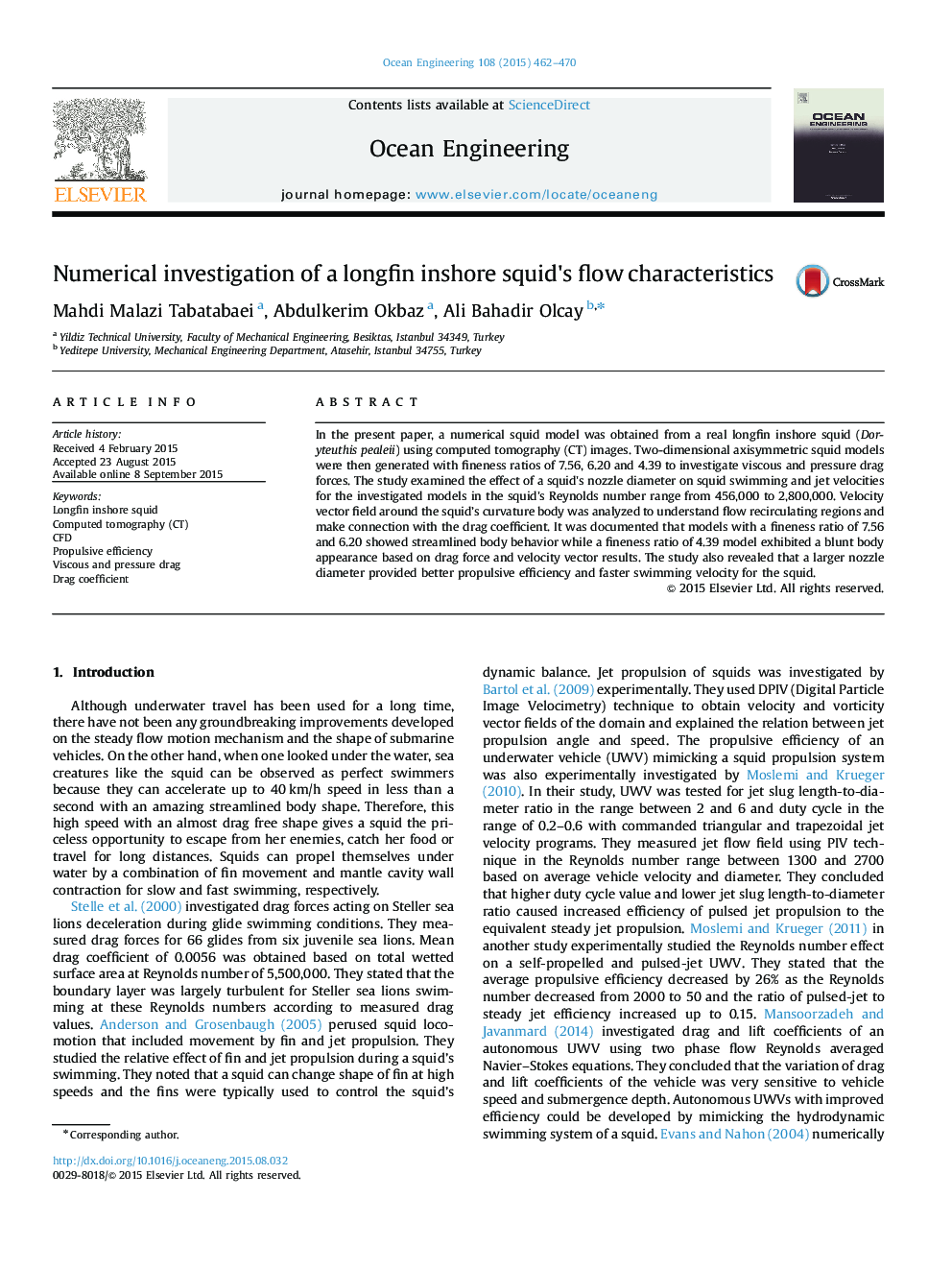| Article ID | Journal | Published Year | Pages | File Type |
|---|---|---|---|---|
| 8065432 | Ocean Engineering | 2015 | 9 Pages |
Abstract
In the present paper, a numerical squid model was obtained from a real longfin inshore squid (Doryteuthis pealeii) using computed tomography (CT) images. Two-dimensional axisymmetric squid models were then generated with fineness ratios of 7.56, 6.20 and 4.39 to investigate viscous and pressure drag forces. The study examined the effect of a squid's nozzle diameter on squid swimming and jet velocities for the investigated models in the squid's Reynolds number range from 456,000 to 2,800,000. Velocity vector field around the squid's curvature body was analyzed to understand flow recirculating regions and make connection with the drag coefficient. It was documented that models with a fineness ratio of 7.56 and 6.20 showed streamlined body behavior while a fineness ratio of 4.39 model exhibited a blunt body appearance based on drag force and velocity vector results. The study also revealed that a larger nozzle diameter provided better propulsive efficiency and faster swimming velocity for the squid.
Related Topics
Physical Sciences and Engineering
Engineering
Ocean Engineering
Authors
Mahdi Malazi Tabatabaei, Abdulkerim Okbaz, Ali Bahadir Olcay,
